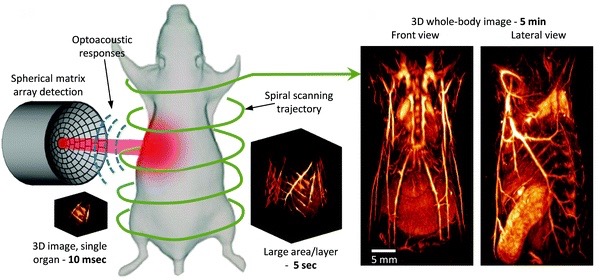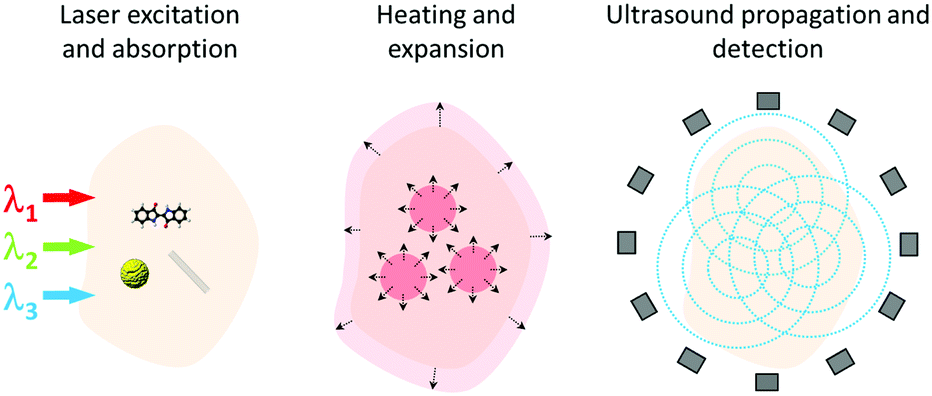Optoacoustic imaging is an emerging new technology that is gaining momentum within the biomedical research community due to its enhanced capability to provide high-resolution in vivo imaging.
Fundamentally, it is a three-dimensional technique that combines features from optics and acoustics. First, tissue is illuminated using short-pulsed light radiation and then undergoes thermo-elastic expansion. This sudden and rapid expansion gives rise to pressure waves with ultrasonic frequency which are detected and analyzed to produce images for study or diagnosis.
Interestingly, the photoacoustic effect has been around since the 1800s however, the surge of interest in this technology has been dependent on the development of adequate laser sources, sensitive ultrasound detection and processing technologies in recent years.
A recent review by Dr. Xosé Luis Deán and Dr. Sven Gottschalk of the Institute of Biological and Medical Imaging in Neurhberg, Germany, Prof. Shy Shoham of the Israel Institute of Technology, and Dr. Ben Mc Larney and Prof. Daniel Razansky of the Technical University of Munich describes the development and new advancements in multiscale imaging of in vivo dynamics using optoacoustic methods.
Purely optical imaging techniques such as optical coherent tomography (OCT), fluorescent imaging and optical microscopies are broadly used for in vivo imaging and have led to numerous advances within medicine as function, disease progression and diagnosis at the cellular and biological scales can be analyzed in real-time. However, the limitation of purely optical techniques lies in resolving deep tissue processes. Beyond millimeter depth, photons are strongly scattered in biological tissues which limits spatial resolution and quantification.
Optoacoustic imaging on the other hand, combines the best of two worlds by capitalizing on the advantages of both optics and ultrasound which enables multiscale, non-invasive imaging deep within the tissue. Many optoacoustic imaging systems also allow wavelength tenability, which allows a single device to serve multiple purposes.
The review outlines some ground-breaking applications that have come about as a result of advancements in optoacoustic images and sensing methods. These include large-scale neuroimaging, visualization of moving organs, contrast agent kinetics, pharmacokinetic and bio-distribution analysis, treatment monitoring, molecular imaging, cellular and sub-cellular function elucidation and three-dimensional handheld diagnostics of human subjects.

The development of advanced optoacoustic imaging techniques is adding to the toolset of biological imaging by filling gaps in established methods. Since it uses nonionizing visible/near infrared light, it is safe for patients and ideal for frequent-use in routine and preventative examinations. The promise shown in preclinical and early clinical studies as well as the surge of technological advancements provides a solid platform for the application of optoacoustic imaging in mainstream medicine.
To find out more see:
Advanced optoacoustic methods for multiscale imaging of in vivo dynamics
X.L. Deán-Ben, S. Gottschalk, B. Mc Larney, S. Shoham and D. Razansky
DOI: 10.1039/C6CS00765A











